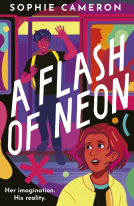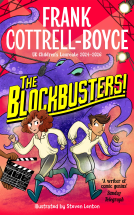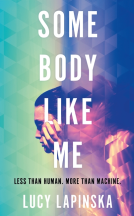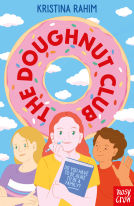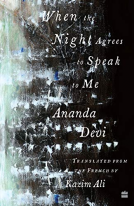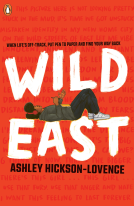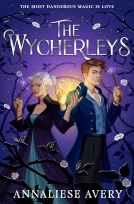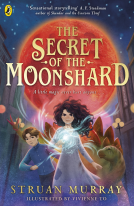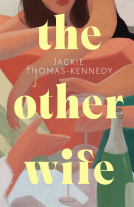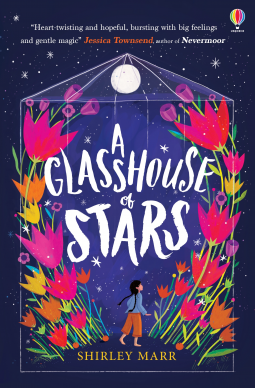
A Glasshouse of Stars
by Shirley Marr
This title was previously available on NetGalley and is now archived.
Send NetGalley books directly to your Kindle or Kindle app
1
To read on a Kindle or Kindle app, please add kindle@netgalley.com as an approved email address to receive files in your Amazon account. Click here for step-by-step instructions.
2
Also find your Kindle email address within your Amazon account, and enter it here.
Pub Date 10 Jun 2021 | Archive Date 28 May 2021
Talking about this book? Use #AGlasshouseofStars #NetGalley. More hashtag tips!
Description
You step inside and your world changes...
Meixing Lim and her family have arrived in the New Land to begin a New Life. Everything is scary and different. Their ever-changing house is confusing and she finds it hard to understand the other children at school. Yet in her magical glasshouse, with a strange black and white cat, Meixing finds a place to dream.
A powerful story of kindness, resilience and imagination, based on the author's childhood experience of migration.
Shirley Marr is a first-generation Chinese-Australian author living in sunny Perth. Shirley describes herself as having a Western mind and an Eastern heart and likes to write in the space in the middle where both collide, basing her stories on her own personal experiences of migration and growing up. Arriving in mainland Australia from Christmas Island as a seven year old in the 1980s and experiencing the good, the bad and the wonder that comes with culture shock, Shirley has been in love with reading and writing from that early age.
Advance Praise
“Told in a unique second-person narrative, this is an exceptionally beautiful and lyrical debut, based on the author’s own experiences”. Picked as Editor’s Choice by Fiona Noble in her June Bookseller previews.
“Heart-twisting and hopeful, bursting with big feelings and gentle magic” Jessica Townsend, author of Nevermoor.
"A rare and beautiful masterpiece; deeply heartfelt, dreamily magical, and glitteringly hopeful. I adored it!" Sophie Anderson, author of The Girl Who Speaks Bear.
“This book is beautiful and tender with a voice every immigrant child will recognise” Kereen Getten, author of When Life Gives You Mangoes
“Wonderful. Bravo Shirley Marr” LoveReading4Kids
Marketing Plan
Classroom and book club discussion packs are available to request from marketing@usborne.co.uk. Please put 'A Glasshouse of Stars discussion pack' in the subject heading, and include your school, library or bookshop postal address. Packs will be sent out just before publication.
Available Editions
| EDITION | Paperback |
| ISBN | 9781474991087 |
| PRICE | £7.99 (GBP) |
Featured Reviews
 Jacqui S, Reviewer
Jacqui S, Reviewer
In the past six months, I’ve read two books which have featured the theme of immigration very heavily: Boy, Everywhere by A. M. Dassu and Front Desk by Kelly Yang. Both of these are incredible books and have, quite rightly, gone on to be widely read by the Twitter kidlit community to which I belong. Very different in style from one another, there are times when both books make quite difficult reading before ultimately finishing with a heart-warming ending that gives the reader hope of a brighter future for the two protagonists.
This new title also features a migration – of young girl Meixing, who together with her parents moves to the New Land in search of a better education and prospects that would otherwise be unavailable to her. While there are many themes that run parallel throughout all three titles, this book is more fantastical and has a very different feel because, very unusually, it is written as a second person narrative – something I do not recall ever having experienced in a work of fiction.
Meixing’s new home is one which her family has inherited following the death of her First Uncle. Arriving after a long plane journey, the family are nervous about entering the house because First Uncle’s funeral has been held in accordance with the local practices, meaning that his ghost might not be aware of his death and still be in residence. Entering the building, Meixing’s father Ba Ba puts a talisman above the doorframe to work its protective magic before settling another inside the front entrance to reflect bad luck away.
Heavily pregnant, Meixing’s mother Ma Ma goes to rest leaving her to explore the house, on the understanding that she is a good girl. After finding her bedroom – something which is a novelty after having to share with her parents – Meixing starts to think of the enormous house, which seems almost to be alive to her with its ability to change itself, as Big Scary. Looking out of her bedroom window at the back garden, she is puzzled by the waist-high weeds and the apparent absence of the orange trees that were her uncle’s main topic of conversation when he was alive.
Initially, life for the family is a struggle but Ba Ba manages to find work and a small car to transport the family and Meixing starts school, wearing cast-off uniform that one of the neighbours gives to her. Here, she struggles to fit in as she does not have enough language to make herself understood and when one of her new classmates steals her grandmother’s ring, Meixing is powerless to stop her. Later that day, Meixing overhears her parents arguing about how they can make ends meet before her father hurriedly leaves the house.
Not knowing how to comfort her mother, or what she should do, Meixing makes her way out to the back garden and notices a cat that she has seen before around the house entering the glasshouse there, and on the spur of the moment decides to go in. Inside, she is surprised to find that the glasshouse is not at all what it appears to be from outside and in fact contains an orchard of orange trees. Going in further, Meixing meets First Uncle who asks her if she would like to plant something. As she waters the tiny seed she has chosen, she sees her whole life appear in front of her, from when she was a tiny baby living on an island to her time now, and the tiny seed miraculously transforms into a multitude of forget-me-not flowers.
When things go from bad to worse for Meixing and her mother, her only source of comfort is visiting the glasshouse. As Ma Ma starts to find her new life harder and harder, gradually Meixing starts to find friends in two boys with whom she finds herself working in school. With the help of her magical glasshouse, will she be able to find her way in this new and strange culture? How and why is the house able to change itself? And will Meixing be able to show her mother that all is not yet lost?
As I said earlier, I cannot ever remember reading a story written in the second person – in school I have always told my children that it just doesn’t happen. I am quite happy to stand corrected because in this instance, it works extremely well – lending the book a very personal, almost eerie, quality in the way that the story hooks you in.
I think that almost inevitably this book will draw a lot of comparisons with Front Desk. In common with Mia in that story, Meixing’s parents have uprooted their family in the hopes of a better future for their daughter and both girls have a great deal of courage, common sense and a keen sense of duty. Where Mia has a burning sense of optimism though, and soon makes friends with the residents of the motel that her parents run, Meixing does not have the same good fortune; it takes her a long time to find allies in any of the children she meets at school, and for much of the story she is almost entirely reliant on both herself and the sanctuary of the glasshouse to get her through the challenges that life throws at her.
Rearing its ugly head throughout the book is the terrible racism that Meixing and other immigrants to the New Land face. Most of this is presented in the form of really quite appalling posters which are stuck up in an extremely cowardly, anonymous fashion but towards the end of the book there is an incident involving the heavily pregnant Ma Ma which I found quite shocking, and which is – very sadly – all too believable.
Much of the story’s credibility must stem from this being semi-autobiographical – the author was herself a child immigrant – and it is clear from reading the notes at the back of the book that her experiences have heavily influenced this writing in her own voice. Because of some of the content, I would say this is definitely a book for upper KS2 or KS3, where it could be used in class to start some great discussions about immigration, bullying and racism.
Huge thanks must go to Usborne Books and Net Galley for my advance read ahead of publication on 10th June. 5 out of 5 stars.
 Bethannia N, Educator
Bethannia N, Educator
2nd person narration gives a hard-hitting personal insight into immigration, racism, bullying & fear but there's also many moments of joy in Meixing's tale, especially her spiritual sanctuary in the glasshouse & developing friendships. I can't wait to see what my class think!
This is a story of belonging, scrafice, family and compassion.
Maixing is such a naive girl, who is taken advantage of at her new school. She can't speak the local language and therefore can't tell teachers when her "friend" has stolen from her and she can't explain how she feels or what she's been through.
(I felt like I really connected to Maixing as I never fit in at school and got taken advantage of from the "popular" people.)
Her mother is suffering from grief and depression and doesn't pay Maixing much attention which she doesn't understand as she is only young.
The description is so outstanding that you can really picture it in you head. I wish I had a glasshouse like the one in the book. The characters have such a deep and powerful story that you really connect to them and feel for them.
A beautiful story about finding your place in the world.
I highly reccomend it.
A Glasshouse of Stars is very much an immerse read, totally different to anything I’ve read before. The second person narrative really draws the reader into the story, forcing them to become the character and experience the book not as a reader, but instead as Meixing, the main character. Given the subject matter of migration, this is particularly powerful.
Meixing and her family have arrived in the New Land, ready to start a new life. The reader is thrown in at the deep end and experiences the racism, the confusion and the fear that the seven year old narrator feels as she begins life in this new place. The feelings of loneliness, grief for her old life, fear of the unknown and frustration are felt as clearly by the reader as they are the narrator. This book was a real eye-opener for me and it helped me to have a much greater understanding of the challenges faced by refugees and migrants. The flash-forwards gave the reader a sense of hope for the future, without losing pace or a sense of time.
A Glasshouse of Stars is a beautiful story: it feels poetic in form. It is a powerful book, which leaves an imprint upon the reader. I think it would be too complex in style for the majority of primary aged readers but would certainly recommend it for Year 7+. Thank you to NetGalley for the ARC.
This is an important book with a powerful message about immigration. It is perfect for raising awareness about the unspoken challenges faced by immigrant children and how crucial it is for the local community to be kind, inclusive, and provide the right learning tools and support.
Meixing’s story is an immersive experience in the difficulties of moving to a new country, struggling with a foreign language, suffering injustice and racist attacks from locals including teachers, all this complicated by the death of her father and the crushing weight of having to take care of her depressed, pregnant mother. The portrayal of these challenges is unflinching, which might make some readers feel angry or overwhelmed, so some parental or classroom guidance could be useful.
Meixing, Kevin and Josh’s feelings of helplessness, loneliness, shame, stress, confusion, fear, frustration and anger are experienced by many immigrant children, who often do not know how to put these complex feelings into words and seek direct help. Speaking from personal experience, it is only with hindsight that I now understand what challenges I had to face as an immigrant child/adolescent. As such, I think this book could do wonders by making these children feel emotionally validated while helping non-immigrants understand their feelings better and be more empathetic.
This book also sends a positive message about finding refuge and strength in one’s imagination, about being hopeful, making friends, being able to learn and adapt, and putting down new roots without forgetting one’s past. It is a reassuring thought that the shy, scared, overwhelmed Meixing in the story grew up to become the inspirational storyteller that Shirley Marr is.
The writing is lucid and imaginative, the use of second-person narrative is unusual but refreshing, and the magical realist elements are fascinating and adorable. I love Big Scary, the house that becomes a character: a magical house with its own feelings that reflect Meixing’s state of mind, expanding or shrinking according to need and mood. I also love the Glasshouse and the metaphor of planting seeds, putting down roots and telling personal stories that are represented by different plants.
I love everything about this beautiful, heartfelt and powerful book. I wish my 12-year-old self could have read it, and I hope many children struggling with similar challenges will be able to read this and find comfort and strength in the story.
✨✨✨
Given that I loved the book, a good review will be posted on Amazon and Waterstones. A shortened version of this review will be also posted on my Instagram account (@Riso.Allegro) on publication day. My IG homepage: https://www.instagram.com/riso.allegro/
 BooksForTopics R, Reviewer
BooksForTopics R, Reviewer
A Glasshouse of Stars is a thought-provoking and heartwarming story of belonging, sacrifice, family and understanding.
Meixing is just 7 when her family moves from a remote island to start a new life in Australia. Everything is strange and new to the family. They don’t speak the language of the New Land, the father doesn’t have a job, a new baby is on the way and there is very little money. They do have a house to live in that was left to them by Big Uncle, who has just passed away. Meixing’s life has just been turned upside down.
Meixing discovers an old house made of glass in the backyard, where she finds the ghost of Big Uncle and a rather strange cat. Inside the glasshouse, she discovers a whole new world. She is the only one who can see this world and begins to visit regularly. School is terrible as she doesn’t speak the language and she is bullied. However, when she and another two children are taken to a special class where they are helped with English, things start to look up. That’s when tragedy strikes. Will Meixing and her family ever learn how to survive in the New Land?
This is an enchanting tale that gently weaves important themes of immigration, racism and displacement with threads of magic, hope and the power of imagination. Based on the author’s own experiences, A Glasshouse of Stars is an excellent story about discovering your place in the world.
 Laura M, Reviewer
Laura M, Reviewer
This is simply a stunning book that is magical but filled with heartache in equal measures.
Meixing and her family arrive in The New Land in order to make a new life and give Meixing a good start in her education. However, tragedy strikes and it hits Meixing as you would expect. She ends up taking solace in her house and, particularly the glasshouse where her uncle used to potter and do his gardening. However, she finds out that the house is magical and responds when she needs comfort.
This is written in second person perspective which makes you feel like you are Meixing. It is a raw but beautiful story that has stayed with me long after I read it. My book of the year so far.
This book is just beautiful. Beautiful in the way it is written, the language used and the images it conjures up. It's written in the second person which is unusual. However, the second person writing makes it incredibly personal and you feel like you are watching Meixing's life as a silent fly on the wall but willing her to do and say the right thing. I had a desperate feeling to help her and I am so grateful for the kind teacher in the story that understood the needs of the three "outsiders" as she brings them together to give them extra help in school as they try desperately to fit into their new country. Based on the author's own experiences made it even more sad that children probably still feel like this when they arrive in a new country and have to fit in. The magical house and glasshouse is just beautiful and adds such a richly deep dimension to the story in the way it helps Meixing and responds to her needs.
All in all a beautiful story about culture, moving, fitting in, family and friendship. There are so many more questions and stories of characters I would like to learn more about.
A Glasshouse of Stars is a unique and powerful story of starting a new life in a new land. Inspired by the author’s childhood experiences, it provides insight into the lack of understanding and empathy often faced by those trying to find a home. This story will prompt valuable discussions about hardship, racism, bullying and how to be empathetic towards the circumstances of others.
 Rashmi S, Reviewer
Rashmi S, Reviewer
A moving, magical, lyrical story with a beautiful and rare second-person narrative that transports you into Meixing's world. The very definition of empathy-building. It'll open up so many conversations about the immigrant experience - old lands and new lands, old languages and new languages, discovering new words and not finding them when you need them. Fitting in, finding your people, being proud of who you are, and so much about feelings and family and friendship. My heart broke and healed and soared. I'll be telling everyone about this precious book.
 J R, Educator
J R, Educator
This magical story is a must read. Meixing arrives with her family to the New Land, and encounters tragedy and racism. The reader is submerged into the confusion, helplessness and barriers communication has on her newly arrived family. Help comes in the form of a neighbour, two new friends (both with their own complex history) and a school teacher. Meixing is able to escape and dream in her glasshouse and through this magic we are able to dream of the possibilities her future life will hold. With this hope in mind, we will her on, in her daily struggles. Written in the second person, this book is immersive and a powerful testament to migration. It will leave an imprint on your heart and I will certainly discuss this title with my teacher friends. I look forward to sharing this story with my children, for us to enjoy and discuss together. I feel this book would be most suitable for KS 3 pupils (Year 7 and above).
Thank you NetGalley for this ARC in return for an honest review.
 Sal B, Reviewer
Sal B, Reviewer
Thank you to Netgalley and the Publisher for providing me with a copy of Glasshouse of Stars, in exchange for a book review.
This review may contain spoilers.
Written in the second person POV, which I am not used to reading in, but in fact I found the story made more of an impact written this way.
A beautiful introduction to the story by painting the house - from her first impressions outside, to her exploration inside.
Meixing’s worries as a child felt so real. I can recall feeling them as a young child; her thoughts and confused feelings about her little world of Ma Ma, Ba Ba and she and worries about the changes to her little world and not wanting to grow up.
You really feel Meixing’s emotions oozing out of the pages; her frustration and upset in trying to communicate the truth to those that would treat her unfairly or unkindly. To put her feelings of loss aside in order to help her grieving mother cope, was a huge tearjerker for me. Her empathy towards two boys who have troubles of their own.
The magical element of the story was abstract, imaginary and wonderful. And made so much sense when tied in with the emotions of the story.
This book is breathtaking. It draws out the thoughts and daydreams of a young child, just as real as if I had experienced them when reading.
In addition, I found the information and questions that Shirley posed at the end of the book (for her readers and for classroom discourse), thoughtful and strengthening.
This is a book I hold close to my heart and never want to let go of. It is one of the best books of its genre I have read.
